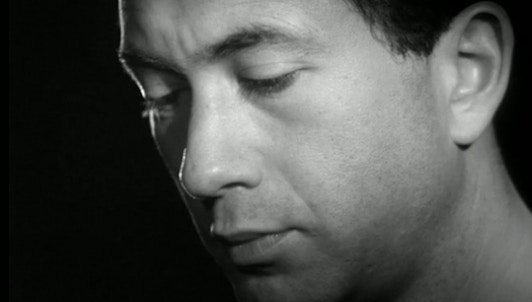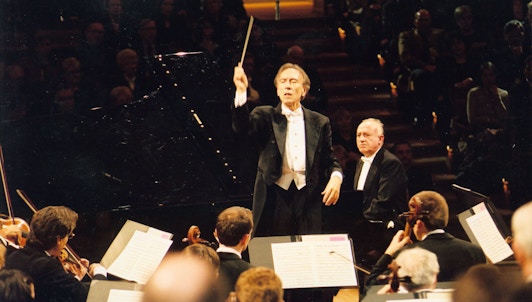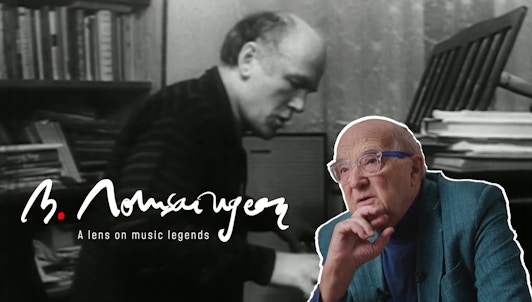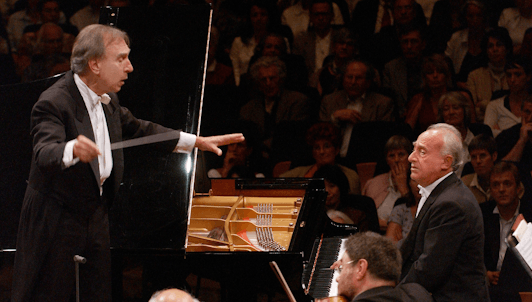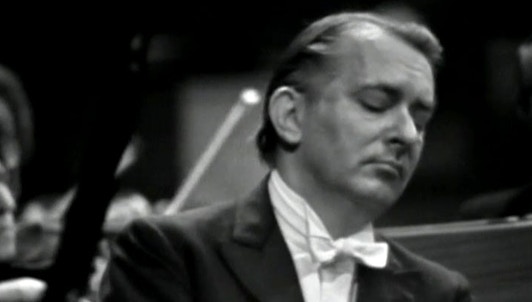Two Legends: Wilhelm Kempff in his prime performing Schubert and Schumann, and Maurizio Pollini at eighteen performing Chopin.
At the end of his life, Wilhelm Kempff retired to Casa Orfeo, his summer residence in Positano, a fisherman's village on the coast of Amalfi where on May 23, 1991, at the age of ninety-five he expired like a candle in the wind, a fortnight after Rudolf Serkin who died on May 9th and a fortnight before Claudio Arrau died on June 9th. It would seem these three legends who illuminated the 20th century with their singular genius wanted to leave together for the pantheon of pianists.
Wilhelm Kempff was a child prodigy. For this son of an organ player in Jüterborg, born on November 25th, 1895, it seemed perfectly natural at the age of ten to play by heart and to transpose into any key, the forty-eight preludes and fugues of the Well-Tempered Clavier by Jan Sebastian Bach. Admitted at nine to the Hochschule für Musik in Berlin, he studied the piano with Heinrich Barth, but he also took lessons in composition and later in philosophy and music history. In 1918, Arthur Nikisch takes him on to play with the Berlin Philharmonic Orchestra the Concerto No. 4 in G Major by Beethoven, the composer that was to accompany him his whole life. He records his complete sonatas three times and plays them in concert as well as the Five Concertos. And each summer in Positano, he gives lessons on interpretation based on Beethoven.
Bach and Beethoven are the pillars on which Kempff builds "his home," Schubert and Schumann are a natural extension to his repertoire. Of Schubert, in a performance filmed in Paris in 1968, Kempff translates all the interiority and depth of the first movement of Sonata No. 22 in A Major D 664, a piece written by the composer in September 1828 two months before his death.
Schumann's language seems to have been invented for Kempff, a chaman in direct contact with the composers. This attitude is something he shares with the conductor Furtwängler (with whom he has often played four-handed at the piano) and combines his worship of the musicians he is interpreting and his spontaneity based on exacerbated individuality. His playing style which is completely spontaneous seems as light as air, as in Arabesque in 1961 and the Davidsbündlertänze he plays in 1963, during the Besançon Festival, which vanish as if in a dream. A phantasmagorical vision, music in pure form.
After the artist in his prime comes the very young Maurizio Pollini, at eighteen after winning the First Prise at the Warsaw Chopin Competition. Instead of launching out on a career that beckons him, he withdraws and works with Michelangeli. But the day after his triumph, he is invited in 1960 by Bernard Gavoty and Magda Tagliaferro to play three preludes by Frédéric Chopin in front of the cameras. Beyond his astounding virtuosity, there is already the presence of a complex personality who knows how to combine, as few others do, lyricism and a scrupulous respect of the score.
